
Educational programs
Wood Buffalo National Park
Parks Canada- Southwest Northwest Territories- Outreach programs
In-person and virtual programs are available throughout the year with an emphasis on school year timeframe.
In-person programs must be booked with a minimum of four (4) weeks to eight (8) weeks in advance depending of length of travel required to get to your school. If travel is required, a minimum of three (3) program delivery is recommended, which mean visiting at least three (3) classes.
Virtual programs must be booked a minimum of four (4) weeks in advance. Booking dates and times are subject to availability and are filled on a first email, first-served basis. The platform Microsoft Teams will be used for all virtual programs.
In-person and virtual programs are approximately 30 to 45 minutes for Kindergarten to Grade 3 and approximately 45 to 60 minutes for Grade 4 and above. The program length includes a brief question and answer period at the end of the program.
Custom programs can be developed and require a minimum of six (6) weeks in advance notice. Booking dates and times are subject to availability and are filled on a first email, first-served basis.
The programs are in relation with the four National Parks and National Park Reserves that are encompassing the Southwestern part of the Northwest Territories. Through the programs listed below, your students will learn about Wood Buffalo National Park, Nahanni National Park Reserve, Nááts’įhch’oh National Park Reserve and Thaıdene Nëné National Park Reserve. Emphasis will be made on a specific park in relations to the subject chosen.
Programs are delivered in English and/or French. All programs offer are free of charge.
For further information or to book a program, you can reach me at NWT-education-TNO@pc.gc.ca
Nahanni NPR and Paddling the South Nahanni River
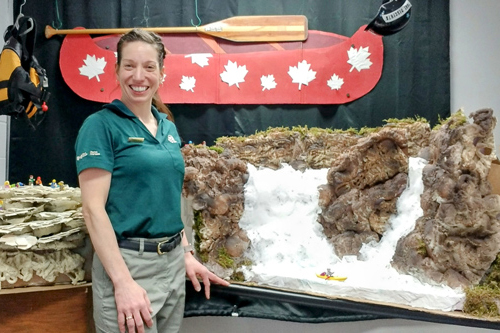
– Have you every heard of Nahanni National Park Reserve? What about the famous Náįlįcho falls or the South Nahanni River? Are you a water tripper thirsty for a punch of adrenaline? Are you seeking a journey that will bring you through canyons, white-water waves classed 4, open gates carved in the mountains, canyon with mystic and legendary names such as Deadmen Valley, Headless Range and the Gates? If so, get in!
Nááts'įhch'oh NPR and Paddling the Broken Skull River
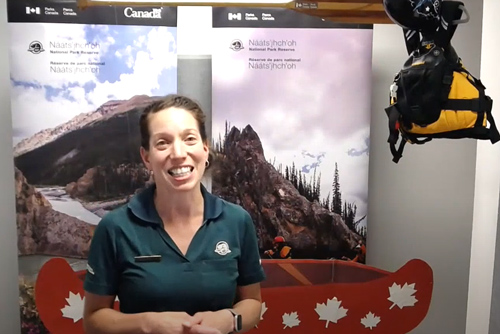
– Have you ever heard of Nááts'įhch'oh National Park Reserve? What about the famous Nááts'įhch'oh mountain or Moose Pond, mouth of the South Nahanni river? If not, we’re going paddling – hop in! The Broken Skull Rive is 108km of pure fun, the bragging rights are just a bonus. We’ll bust through tons of fun wave trains and some rocky rapids, while scooting around canyons, boulders and gasping in awe at the epic scenery.
Thaidene Nene NPR
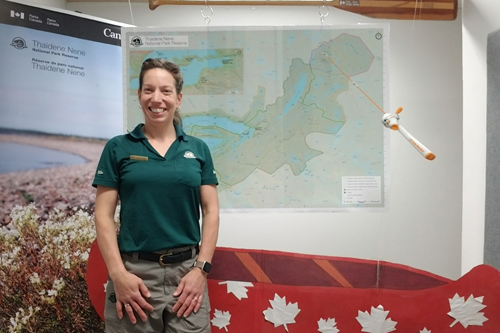
– Have you ever heard of Thaidene Nene National Park Reserve? What about the legendary Pike`s portage that led to Artery Lake, place where the barrenlands tundras and the subarctic boreal forest converge? Travel a historic route from the shore of Great Slave Lake to the wild tundra landscape of the barrenlands, home to muskoxen, caribou and grizzly bear. Experience Thaidene Nene, the “Land of the ancestors”, and learn about the importance of protecting this special place.
Wood Buffalo NP
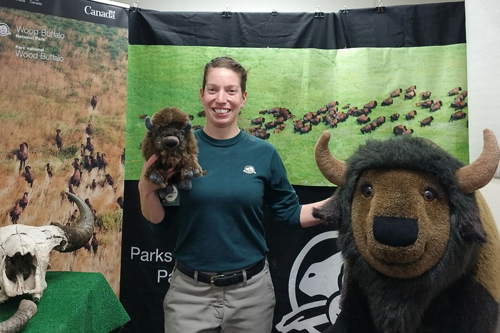
– At Wood Buffalo National Park size matters. Not only it is the largest National Park in Canada, but also the largest dark sky preserve and home of the tallest migratory bird, the endangered Whooping Crane. Established, over a century ago, to protect the last free-roaming herd of Wood bison, it is a significant example of unique cultures, landscapes and wildlife.
National Parks and National Park Reserves of the SWNWT
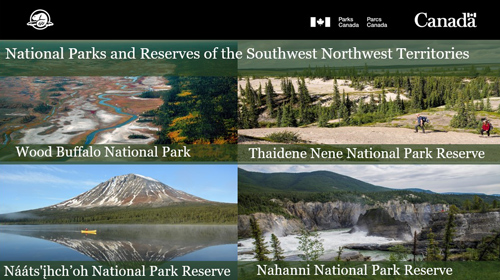
– Are you wondering about the National Park and National Park Reserves that exist in the South of the Northwest Territories? Did you know that Wood Buffalo National Park is the largest National Park in Canada? Did you know that Náįlįcho Falls in Nahanni National Park Reserve is almost double the height of Niagara Falls? Did you know that Naats’ihch’oh National Park Reserve has a powerful mountain that possesses a prehistoric power? And did you know that Thaidene Nene National Park Reserve is a place where the barrens and subarctic boreal forest converge?
Wilderness Survival

- Have you ever got lost in the wilderness in winter? Would you know what to do to survive one or many nights with only what mother natures has to offer and what is inside your backpack? Learn how you can survive by following five these (5) simple rules.
Nocturnal animals and their adaptations - Owls
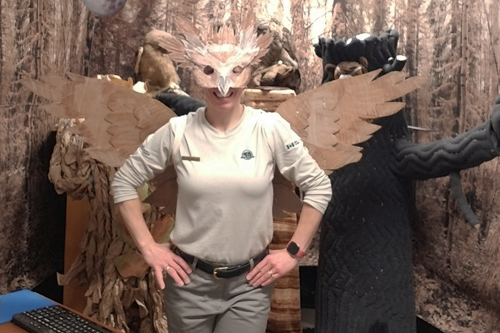
Nocturnal animals and their adaptations - Bats
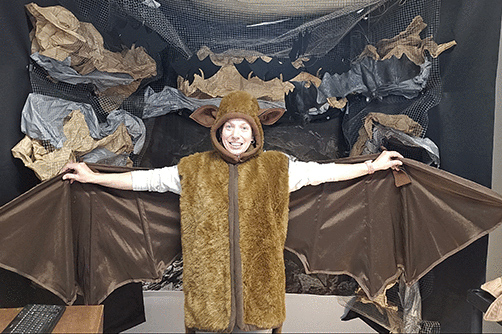
– Have you ever seen bats, these nocturnal Chiroptera that capture our imagination? They are the only mammals capable of flying! Their unique characteristics as well as their many adaptations allow them to survive in their varied environments. From wings made of thin membranes of skin to the use of a natural sonar system, every aspect of their anatomy plays a crucial role in their lifestyle.
Dark Sky
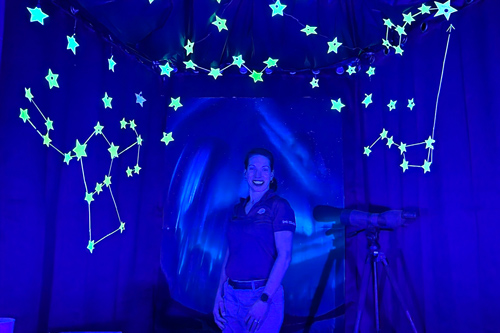
– Stars. Constellations. Milky Way. Greek Mythology. Did you know that Wood Buffalo National Park is the largest Dark Sky Preserve in the world? What does that mean? Explore the beauty of the dark sky and learn about the constellations that make our sky the most fascinating of all.
Beaver and muskrat
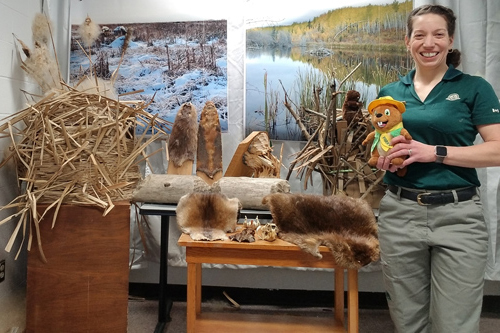
– You look at the water. What do you see? A small ripple forms on the surface of the water. What is it? A small head is leading the way in front of the ripple and only a small part of the anatomy is showing. Is it a beaver or a muskrat? How do I know? Join me to know!
Caribou and their adaptations
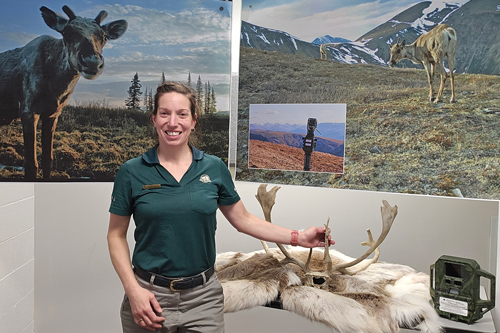
– Are caribou and reindeer the same species? Caribou are found in Northern National Parks of Canada. Subspecies are thriving in those landscape; from their unique physical traits to their seasonal behaviors, they have learned to adapt to survive to the cold winters and wild tundra landscapes due to their multiple adaptations.
Collared Pikas and Climate Changes
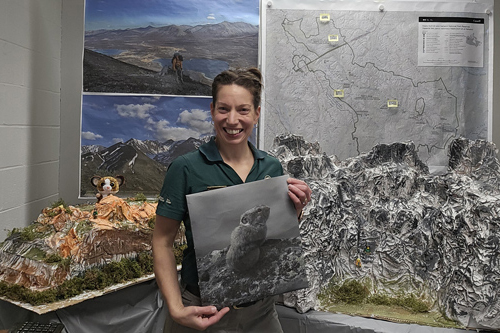
– In alpine talus of Nahanni and Naats’ihch’oh National Park Reserves, a small lagomorph is very sensitive to temperature fluctuations and habitat loss due to climate change. Pikas are prime example of a specie impacted by global warming. Together, we will discover the Collared Pika.
- Date modified :